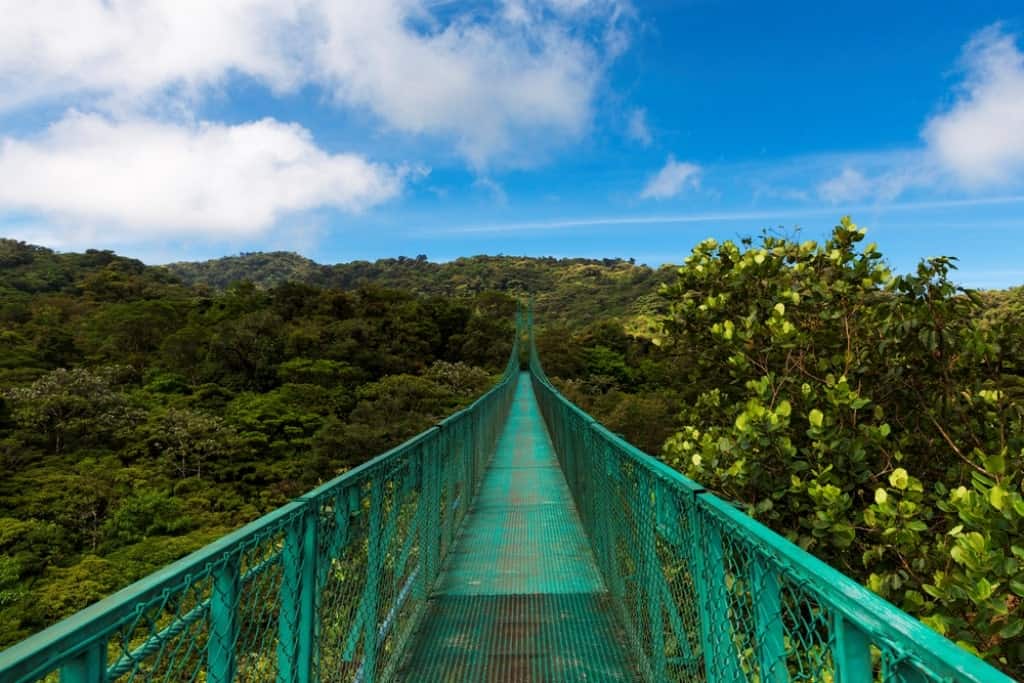Costa Rica should be at the top of any travelers list. Situated in the heart of Central America, this small country boasts an assortment of stunning natural beauty, with biodiversity hotspots and areas of cultural wonders scattered throughout.
Although a popular destination year-round, Costa Rica is split into two distinct seasons: the rainy season (April – November) and the dry season (December- May). Both offer an array of spectacular activities, so a road trip around the country is a worthwhile experience, no matter what time of year.
Below is a proposed itinerary for a 10/11 day trip around some of the very best destinations in Costa Rica.
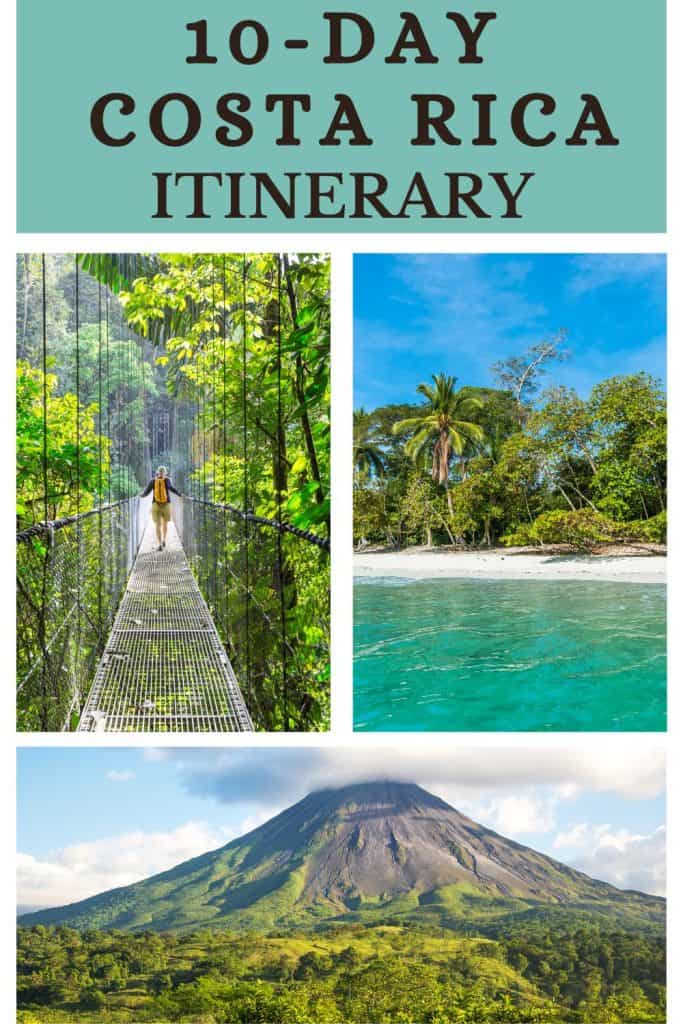
Disclaimer: This post contains affiliate links. This means that should you click on certain links, and then subsequently purchase a product, I will receive a small commission.
Table of Contents
How to Travel Around Costa Rica
Costa Rica is a popular tourist destination, attracting near 2 million tourists per year. To cope with this demand, roads and essential travel around the country is well maintained. The majority of roads are paved, forming an extensive road system throughout the country.
Keep in mind, the weather of Costa Rica can get wet, wet, wet. Deep potholes can be sighted, so be wary of these if you choose to drive. Some locations off the tourist trail are no more than dirt tracks. You may even find yourself having to cross a river or two in rare cases.
So, whilst the majority of the county has good, paved roads, watch out for areas that are not as well maintained.
I recommend using the worldwide car service company, Enterprise if renting a car in Costa Rica. You can book online and pick up your chosen car from San Jose Juan Santamaria International Airport. It is also advised to hire a 4×4, especially during the rainy season.
Another top tip, especially if hiring a rental car, is to always carry small change with you. Many of the bigger highways throughout Costa Rica, contain multiple toll stations. You must pay with cash to be allowed to continue your journey.
Another response to the growing tourist industry is the public transport system. Many places are easily assessable through a bus scheme that connects the country. Normally, buses are regular and timely. You can get a bus from multiple large cities in Costa Rica, however, San Jose is the central hub of bus routes.
From here, you can get a bus to many destinations within the country. A few bus changes may be needed here and there, but on the whole, it is an easy process. Of course, this cannot be guaranteed with every stop in this itinerary.
A Detailed 10 Costa Rica Itinerary
Day 1: San Jose
Flying into Juan Santamaria, the country’s main airport, your first call of action is to head to the capital city of San Jose. The largest city in Costa Rica, San Jose is the central economic and cultural hub of Costa Rica. San Jose typically isn’t at the top of the list for tourists, but this doesn’t mean there isn’t plenty to see. Spend the afternoon exploring the cultural scene.
Highlights of San Jose
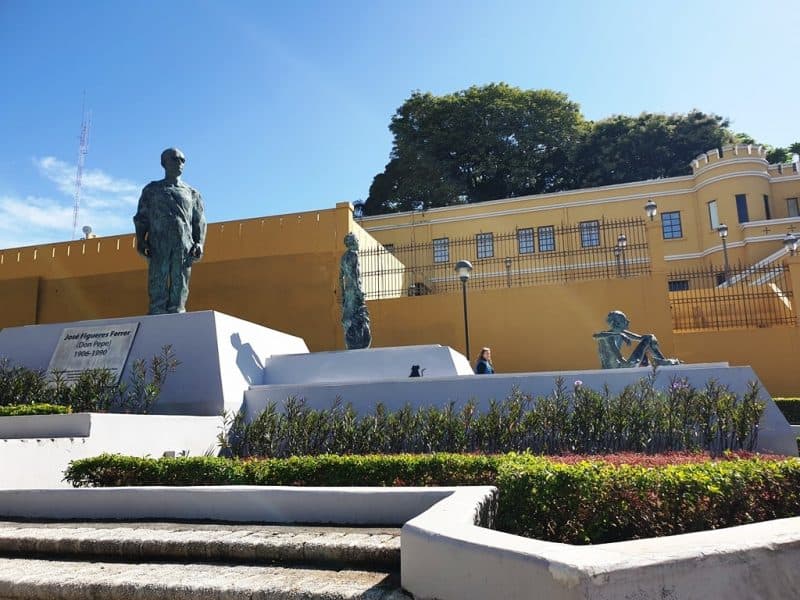
National Museum of Costa Rica
One of the best places to discover Costa Rica’s cultural identity, as well as natural history, the National Museum exhibits the historical highlights of Costa Rica – from archaeology, anthropology, and natural history. The entrance is $8.
Jade Museum
Home to numerous jade artifacts, the Jade Museum is the largest collection of pre-Columbian jade in the world. Discover artifacts spanning thousands of years in a uniquely designed building.
National Theater of Costa Rica
Ornately decorated and filled with highly decretive furnishes, the National Theater is one of Costa Rica’s most impressive buildings. Marvel at the architectural masterpieces or catch a musical performance. The entrance is $10.
Central Market
The market of all markets in Costa Rica, the Central Market is filled with food and souvenir stalls. Try unique and local flavors, such as jugo de cas or chan. Alternatively, simply shop for locally produced and traditional artifacts.
Transportation from the airport to San Jose
Driving: Hiring a rental car, the trip into downtown San Jose from Juan Santamaria airport takes approximately 25 minutes, depending on traffic. Head down the Pan-American highway, following signs for San Jose. One of the most popular navigational apps used by locals is called Waze.
Public Transport: There is a bus departing from the airport every 15 minutes. The bus service is called TUASA Bus San Jose and takes you directly into the city center, lasting approximately 35 minutes. This is a very cheap way of travel. You can also book shared shuttles or taxis.
Where to stay in San Jose
San Jose houses a variety of accommodation types, from cheap backpacking hostels to luxury hotel complexes. It is recommended to stay just one night in San Jose, so unless you’re looking for a luxurious break, I suggest not splurging the cash here.
Selina San Jose: Selina is a chain of hostels. They offer friendly, budget-friendly dorm rooms or private shared accommodation. This is a great way to meet backpackers and like-minded travelers.
Radisson San Jose: The Radisson is a contemporary hotel, featuring onsite pools and restaurants. It is clean, spacious, and comfortable. Perfect for those wanting to chill and acclimatize to the new area.
Day 2: Poas, Sarchí and the Doka Estate
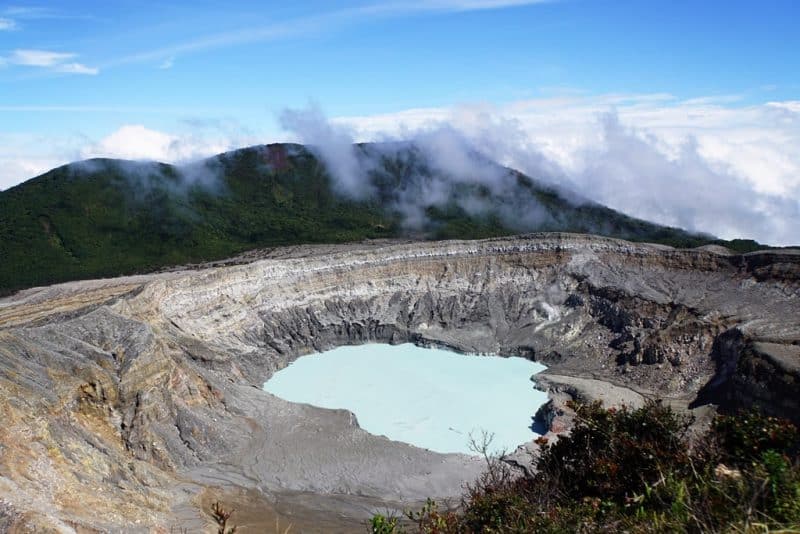
After a well-needed acclimatization period in the city, today you can hit the roads early and head into the country to discover your first true taste of Costa Rica, as you journey just outside the city.
Your first stop is the mighty Poas Volcano. An active volcano, you will witness the incredible geology firsthand. Poas is a cloud forest National Park and the largest open volcano in the world, reaching a staggering mile in diameter and depths of 320 meters. Due to the volatile nature of the volcano, you will be limited to just 20 minutes at the crater viewpoint. You must wear a hard hat at all times, but these will be provided for you.
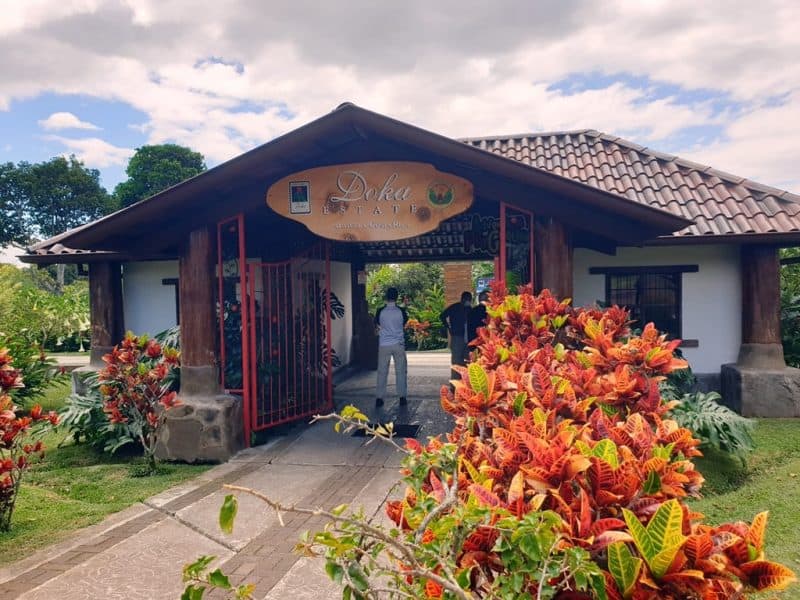
After navigating the windy mountainous roads, you will journey from Poas Volcano to The Doka Estate, a family-run coffee plantation that offers world-class coffee tours. Here, you can learn everything regarding the step-by-step process of coffee making, from cultivation to processing. At the end of your visit, indulge in a tasting experience and discover why the world is coffee mad.
After your caffeine fix, you will then journey further West to the town of Sarchí. This small town has put itself on the map with its colorful and ornately decorated oxcarts. Also a National Symbol of Costa Rica, the oxcarts are handcrafted in Sarchí and transported across the country.
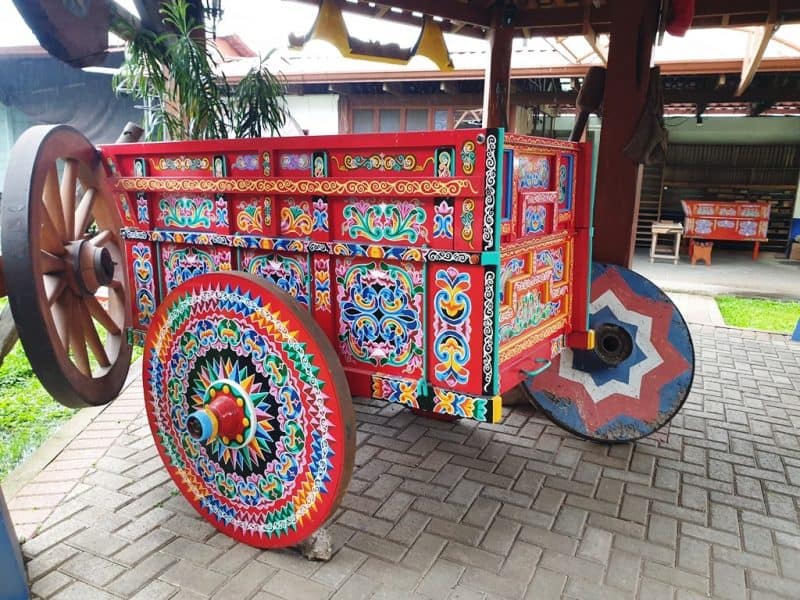
Within the town, discover local life and craft markets. Walk around the vibrant streets and marvel at the equally vibrant cathedral.
Transportation
Driving: Driving to Poas Volcano from San Jose is beautiful. About 45km from the city, it will take approximately 1.5 hours to reach Poas by car. Head Northwest, going through the city of Alajuela, and continue along Route 130. Merge onto Route 146 and take a left at the junction. Follow signs to Parque Nacional Volcan Poas. The road up to Poas allows you to take in the magical views of the entire Central Valley.
From Poas, head South back down Route 146 and Route 712 towards the town of Cerrillal. Continue past Iglesia de San Isidro and follow the road round towards The Doka Estate. The signage is good.
After Doka, you will be heading West towards Sarchí, along Route 107. You will pass the towns of San Pedro de Poas and Santa Gertrudis Sur, and finally Grecia. Grecia is a large town and from here, signs to Sarchí are clear. Follow Route 118 out of Grecia and towards Sarchí. When in doubt, use the app Waze.
Public Transport: You will need to change the bus here. First, head to Alajuela on the TUASA bus. Buses to Alajuela are some of the most frequent in Costa Rica, leaving every 5-10 minutes. From Alajuela, take the bus directly to Sarchí with the TUAN bus company. Travel time will be close to an hour from Alajuela.
There is a public bus that leaves, Tuasa, that departs from San Jose Avenida 2 at 8:30 am to Poas Volcano. The roads are in good condition, but the topography of the area makes for one winding road. Travel time takes approximately 2 hours and costs $3. This is great if you want to do a day trip from San Jose, however, public transport from Poas to elsewhere is extremely limited.
Alternatively, you can take a guided trip from San Jose:
Poás Volcano, Coffee Plantation & La Paz Waterfall Gardens
Where to stay
If you are not renting your own vehicle it is preferable to stay the night in San Jose.
Bosque de Paz: This rustic-style property offers traditional lodgings, with wooden furnishings and beautiful natural scenery. Rooms are spacious and comfortable and offer spectacular views of the surrounding jungle scenery. Located near the town of Sarchí, this is a great place for you to recuperate, ready for your onward journey through Costa Rica.
You might be interested in: The best day trips from San Jose.
Day 3-4: Manuel Antonio
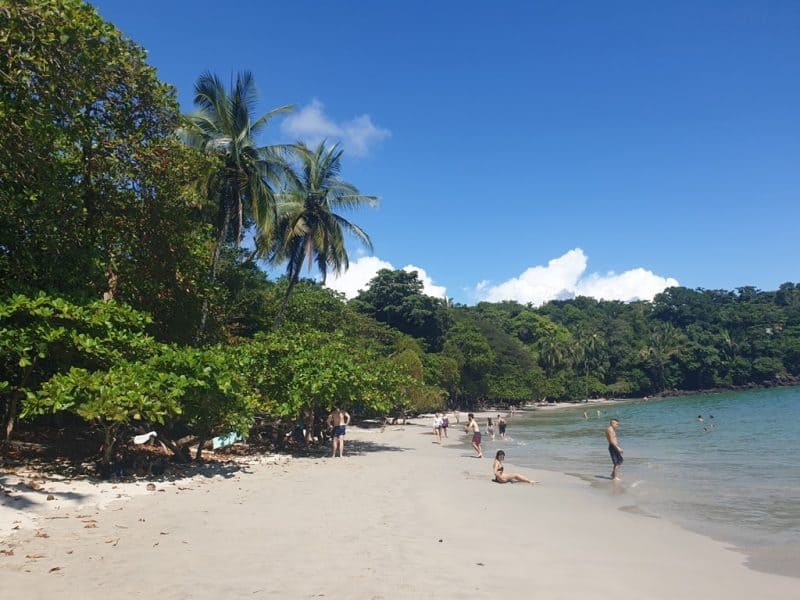
Another early rise, today you will leave the Central Valley of Costa Rica and head towards the Pacific coastline of Manuel Antonio.
Although the smallest National Park in Costa Rica, Manuel Antonio is a must-see. Encompassing rugged jungles, white sandy beaches and coral reefs, the sheer abundance of life here is outstanding. With approximately 200 species of birds and mammals, this is your first chance to indulge in the true Costa Rican wilderness. Lose yourself in the jungle trails, lounge on the tropical beaches, or try a spot of watersports.
You will spend 2 days and 1 night in Manuel Antonio. Be sure to discover the National Park, as well as the neighboring town of Quepos, where a plethora of shops and restaurants can be found.
Transportation
Driving: Manuel Antonio is one of the most popular destinations in Costa Rica. The roads are well paved and well signposted. From Sarchí, the drive is easy and takes roughly 3 hours. Take the Pan-American highway West, following Route 1 to San Ramon. From here, it is a direct road Atenas, where you will take the exit to Orotina. Your next stop will be the coastal town of Jaco. From Jaco, it is a direct road through a range of landscapes.
Public Transport: The easiest place to take a bus to Manuel Antonio is from San Jose, where the Tracopa express bus leaves thrice daily, with no reservation required. Buses are cheap, costing $10 for a return trip to Manuel Antonio. However, another option is to fly from the domestic terminal at Juan Santamaria Airport
Highlights of Manuel Antonio
Explore the National Park
Named as one of the most beautiful parks in the world by Forbes in 2011, Manuel Antonio National Park has a rich biodiversity. Hike the many trails that can be found, but don’t forget to keep your head peeled up to the canopy. You may find sloths, monkeys, and scarlet macaws!
Some trails venture off the beaten track and offer awe-inspiring views of the surrounding jungle and ocean. This National Park is a gem of Costa Rica.
Costa Rica is famed for its tropical beaches, and Manuel Antonio is no exception. Within the park itself, a few different beaches can be found. Some, such as Playa Escondido are remote and deep in the National Park. Others, such as Manuel Antonio Beach is at the end of the main trail. This beach has been voted as one of the best beaches in the world by Lonely Planet.
The beaches around Manuel Antonio are a haven for activities. Simply relax and soak up the rays, or snorkel offshore to discover some of the amazing marine life on offer.
Manuel Antonio Town
After a day of exploring the National Park, a trip into town is the perfect way to finish. Beachside restaurants can be found near the entrance of the National Park, offering beers and cocktails, as well as tasty food. Try ceviche, a citrus-cured fresh fish dish.
Where to stay in Manuel Antonio
There are plenty of accommodation types throughout Manuel Antonio to cater to any budget.
Tabulia Tree: Set at the top of a hill and surrounded by jungle, Tabulia Tree is a great place to escape the crowds. Rustic accommodation with comfortable rooms and a pool on site. Incredible for wildlife, with sightings of squirrel monkeys and scarlet macaws nearby.
Hotel Villabosque: Located just meters from the beach and the entrance of the National Park, this hotel is ideally situated in the thick of the action. Rooms are basic, yet comfortable.
Hotel Playa Espadilla: Another hotel located close to the beach. However, off the main road and surrounded by jungle, this location is less hectic than other beachside locations. The property is clean, but on the more expensive side, with rooms starting at $229 per night.
Day 5-6: Monteverde
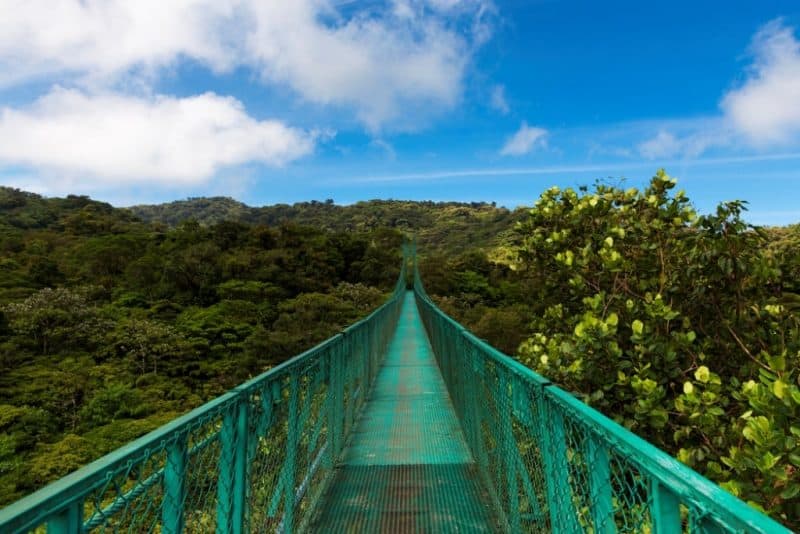
After a day of immersing yourself within the coastal community of Costa Rica, today you will be heading inland to explore other unique ecosystems. Welcome to the magical lands of Monteverde Cloud Forest.
Globally, cloud forests cover just 1% of forest systems. Found in tropical and subtropical environments, a constant layer of cloud swamps the landscape. This moist and mystical world is home to strange and wonderful creatures, from elusive birds to endemic amphibians.
The trees themselves are smaller than their rainforest counterparts. Twisted in an array of unique shapes, Monteverde is like no other place on Earth. Thick coverings of moss and lichens steal the scene and epiphytes, such as orchids and bromeliads, drape through the air. Discover the endless trails and species that can be found here.
Transportation to Monteverde
Driving: Located 190km from Manuel Antonio, it will take you approximately 3.5 hours to reach Monteverde via rental car. A very easy drive, follow Route 34 towards Puntarenas. From Puntarenas, the road drastically changes into smaller, (sometimes) dirt tracks. Be careful. You will meander through the beautiful landscapes, passing small communities. Follow Route 606 to Monteverde. The signage is good.
Public Transport: From Manuel Antonio, your best bet is to get a bus once again into San Jose and then an onward journey to Monteverde. You will have to change bus companies and terminals, look out for Transmonterverde Terminal 7 in San Jose Downtown. From San Jose, the journey time is approximately 4.5 hours.
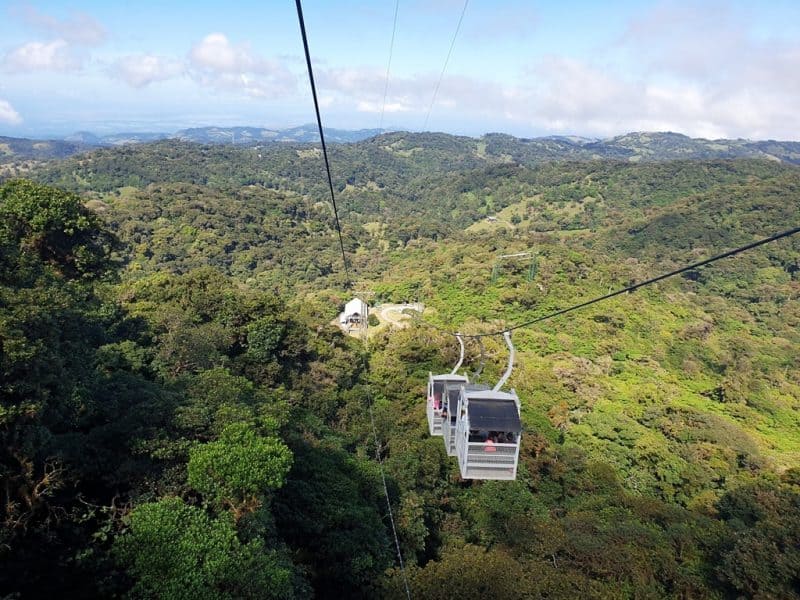
Highlights of Monteverde
Monteverde National Park
Monteverde is more than 1500 meters in elevation. Coming from Manuel Antonio, it may feel like you have ventured to a completely different county. Everything has changed; from the vegetation, the climate, and even the people.
There are over 8 miles of hiking trails within the Park, home to the elusive Resplendent Quetzal. This colorful bird stands out like a sore thumb in this gloomy environment. However, they are hard to spot and it is recommended to book a tour guide to help you spot this incredible and rare bird.
Monteverde is in fact a bird-watchers haven. Within this system, you can find three-wattled bellbirds, toucans, umbrella birds, and many more.
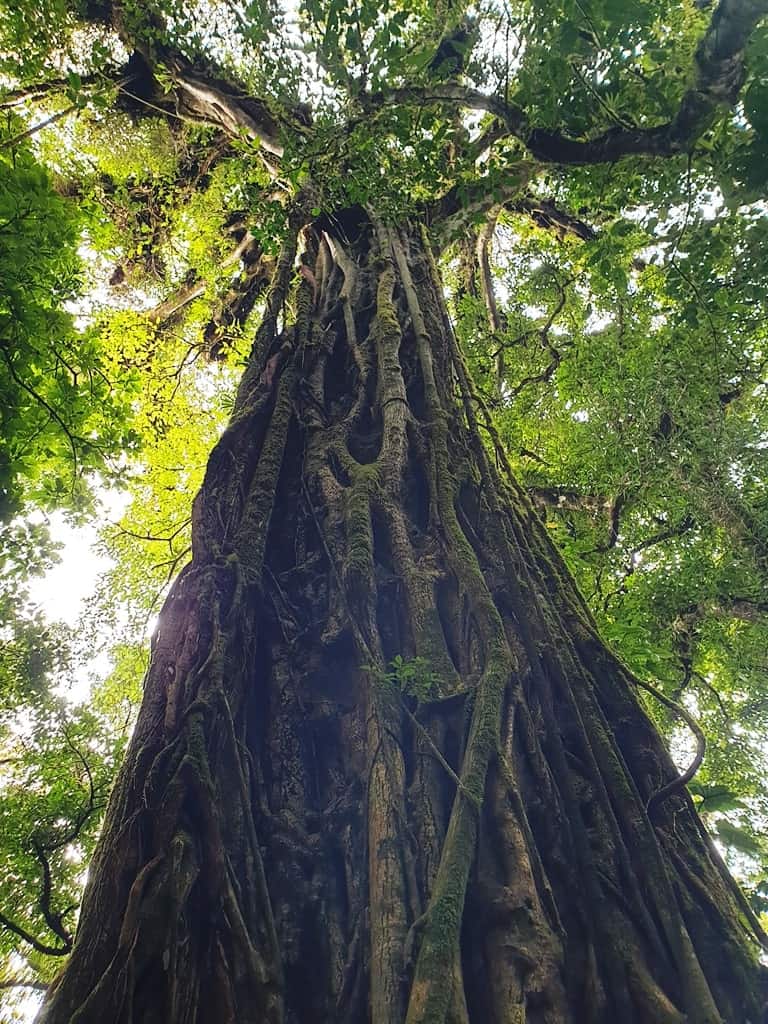
Ziplining
This is one for the adrenaline junkies out there. A unique way of experiencing the cloud forest, soar through the air and feel the rush of wind in your hair. With thick clouds rolling in, and the sounds of mysterious creatures all around, this is certainly one for the bucket list.
There are many companies that offer this experience in Monteverde. Some of the most popular companies in the area are Selvatura Park and Sky Adventures Monteverde Park. An additional bonus is the opportunity to either bungee jump or experience the superman position. A great day out for couples and families alike.
Hanging Bridges
A vastly popular attraction of Monteverde, the hanging bridges offer a unique perspective of the jungle below. Suspended over deep valleys, you will see the cloud forest in a completely different light. Look out for arboreal animals, such as tree snakes and sloths.
Check out: The best things to do in Monteverde.
Where to stay in Monteverde
Hotel Poco a Poco: Close to the reserve, Poco a Poco is a mix of modern architecture and traditional furnishings. After a day of hiking the forest, relax in the heated swimming pools and listen to the chorus of nature.
Hotel Fonda Vela: Just mere minutes from the entrance of Monteverde National Park, this hotel is ideally suited for anyone with an interest in all things nature. The accommodation is in keeping with the natural scenery and comfortable.
Day 7-8: Arenal
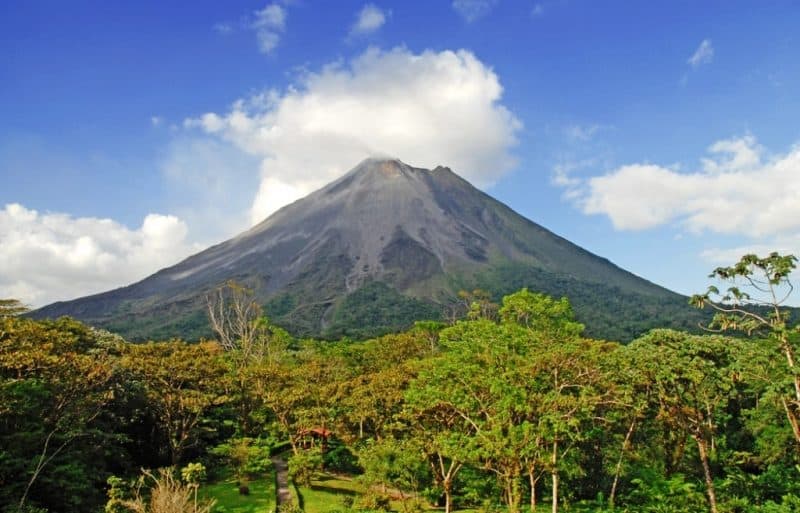
Perhaps the most popular tourist destination in Costa Rica, Arenal boasts areas of outstanding natural beauty.
Leaving Monteverde, you will journey Northeast towards the town of La Fortuna. This small-town borders the Arenal Volcano National Park, which in turn is home to the mighty Arenal Volcano. Once the most active volcano in the country, now lays dormant. Rising 1700 meters, this volcano dominates the landscape and shapes the entire region.
There are a wealth of activities on offer for you to see and discover, from learning about all things chocolate to wildlife hikes in search of sloths! The region is home to lowland rainforests that support huge biodiversity.
Transportation to Arenal
Driving: Roads are well paved and maintained (apart from a section near Monteverde). However, a National Park and lake make for natural obstacles. Because of this, the 66-mile journey takes upwards of 4 hours by car. There are options to book a ferry service across Lake Arenal, which will cut time considerably.
From Monteverde, follow Route 145 to Tilaran. From here, pick up Route 142 which will take you around Lake Arenal and the old town of Nuevo Arenal. This is a great place to stop for breakfast or lunch, with picturesque views of the lake. Continue to follow Route 142 all the way into La Fortuna.
Public Transport: From Monteverde, public transport is incredibly long and inefficient, taking upwards of 8 hours. It may be better to hire a shared shuttle service, that could cost between $70- $120 and take 4 hours.
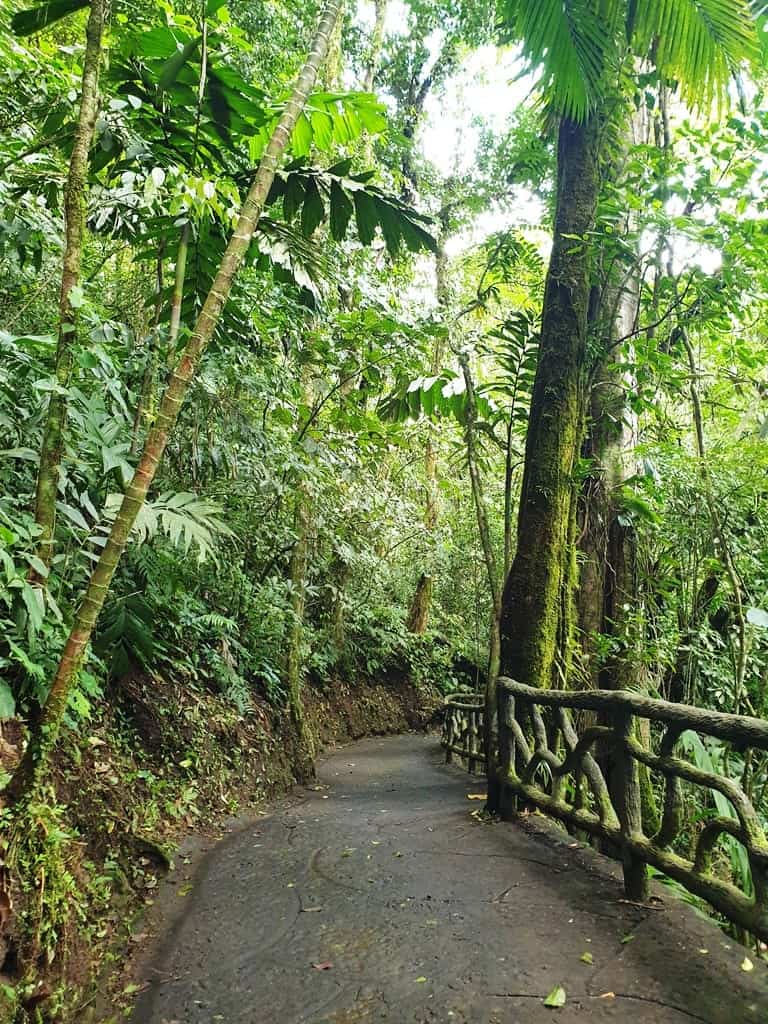
Highlights of Arenal
Arenal Volcano National Park
Access to the slopes of the volcano is forbidden, however, discover the amazing views of the volcano close-up from the Arenal Volcano National Park. Wander the many trails and pass through a variety of habitat types. Look out for monkeys and sloths!
Lake Arenal
The biggest freshwater lake in Costa Rica, Lake Arenal is great for those who love watersports. Try kayaking around the lake in search of aquatic creatures, or have a go at a spot of fishing. Around the lake, get your lungs pumping with a brisk walk or cycle ride to appreciate the stunning landscape.
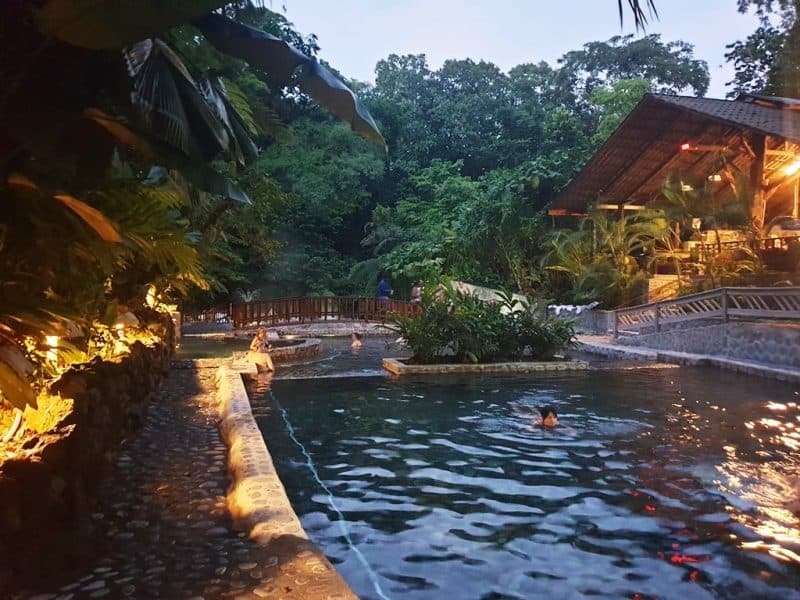
Hot Springs
This is an absolute must of Arenal. After an exhausting journey of traveling and hiking, relax in the natural, geothermal waters of Arenal Volcano. Heated water bubbles up to the surface, forming pools in which you can indulge. A great activity to do at night when the surrounding jungle comes to life. There are multiple facilities to choose from, catering to any budget.
Arenal Waterfall
Set amid 210 acres of premontane tropical wet forest, a 70-meter-high waterfall cascades down. The path to the falls is paved, however, you will face around 500 steps along the way! Perfect on a hot day, where you can bask in the refreshingly cool waterfall pools after.
Check out: Things to do in Arenal.
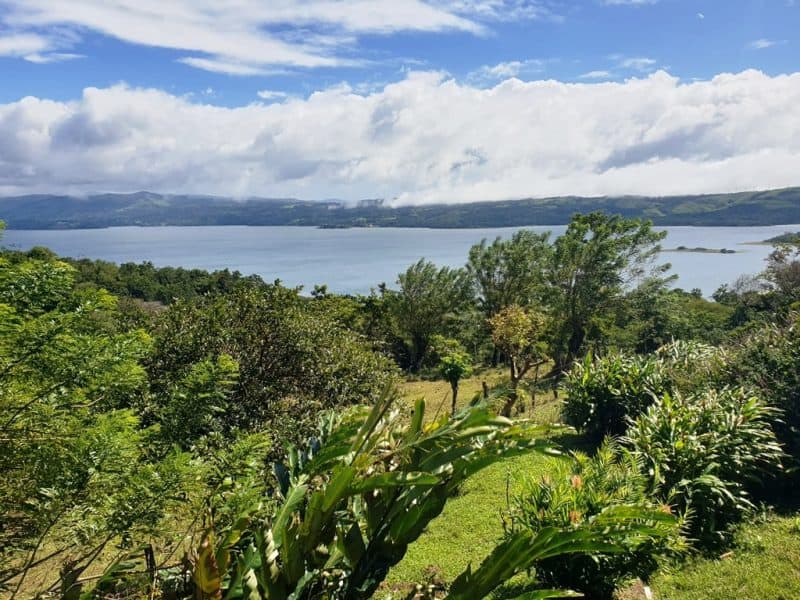
Where to stay in Arenal
Hotel Magic Mountain: World-class hospitality, with exquisite views to match. With an on-site spa, you will be able to relax, all the while surrounded by stunning scenery.
Tifakara Lodge: Tucked in a secluded spot in the foothills of Arenal Volcano, Tifakara boasts individual cabin-style lodgings. Nature is at the forefront of design here. Enjoy the hot tubs, whilst watching the tree frogs hop around.
Day 9-10: Tortuguero
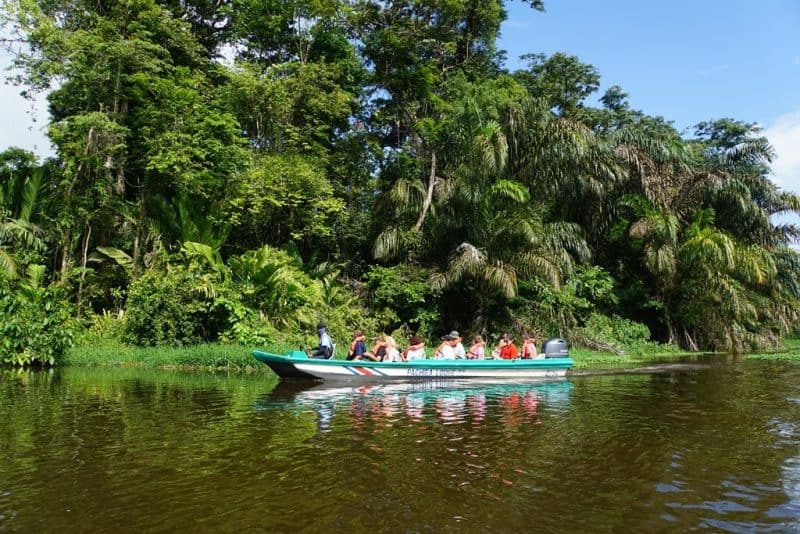
Often referred to as “The Amazon of Costa Rica”, Tortuguero is one of the most biologically rich places on Earth. Set in the Caribbean side of Costa Rica, in the Northern province of Limon, Tortuguero receives as much as 6ft of rain per year.
This exceedingly high rainfall, coupled with the tropical humidity, has allowed many species to thrive. The main town of Tortuguero is isolated and relies on the network of waterways to import goods, and visitors, into this small fishing village.
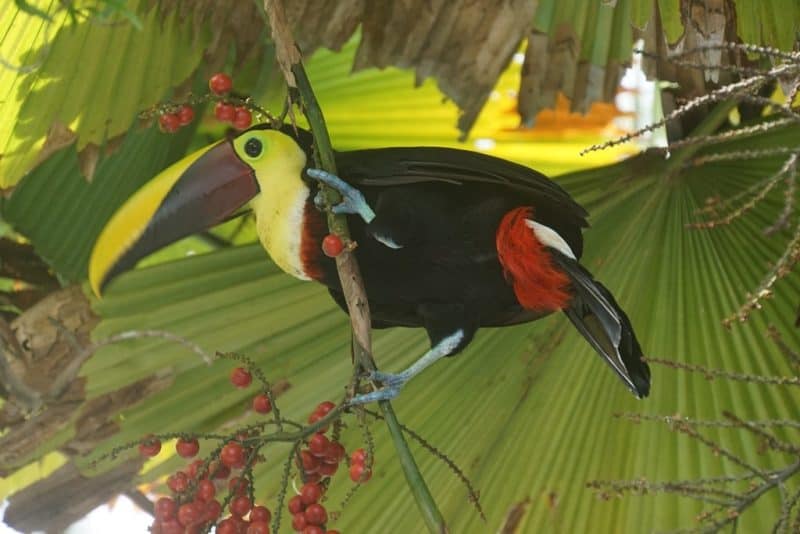
One of the best spectacles of Tortuguero is the turtles that come to lay their eggs on Tortuguero Beach. Nearly hunted to extinction, dedicated conservation and research have stabilized the population of green, olive ridley, and leatherback turtles here. The best time to visit to see the turtles is between the months of July – October.
You will spend your final two days in this haven of life.
Transportation to Tortuguero
Driving: Unlike other places in Costa Rica, Tortuguero is cut off from the outside world. Only accessible via boat or air, you will find no cars in Tortuguero. There is however a car park in the small portside town of La Pavona, where you can pay per day to keep your car in a guarded area.
From Arenal, follow Route 4 to Guapiles. Then, head North following Route 247 towards La Pavona.
Public Transport: Public transport is not recommended from La Fortuna to Tortuguero. Whilst it is possible, it will take near an entire day of bus changes and boat rides. Not ideal for those on a tight itinerary. Instead, opt for a private shuttle directly from La Fortuna.
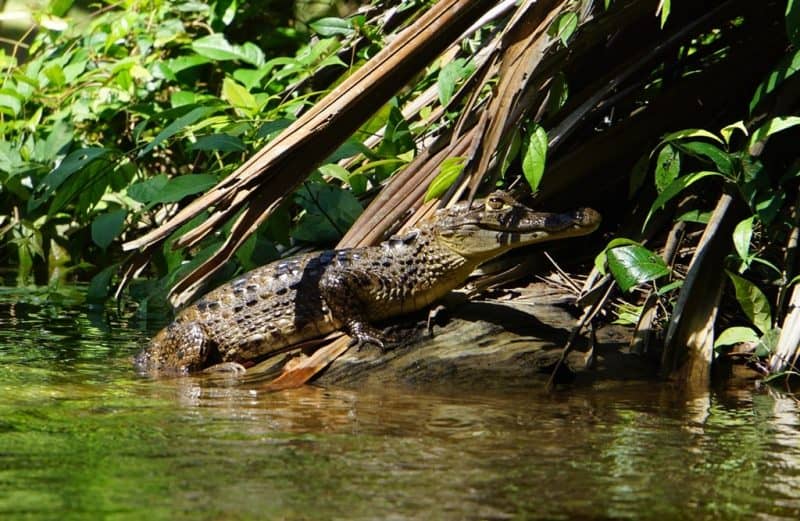
Highlights of Tortuguero
Tortuguero National Park
Covering an area larger than 46,000 acres, Tortuguero National Park encompasses a variety of ecosystems including lowland tropical rainforest, mangrove, freshwater, and coastal. You can hire local guides to help identify wildlife along the trails.
River Tours
Possibly one of the few places in Costa Rica where walking isn’t the best way to see wildlife, Tortuguero plays host to a labyrinth of rivers and tributaries. Discover kayaking or canoe rentals, that allow you to penetrate the deep rainforest to learn about the inhabitants that reside here.
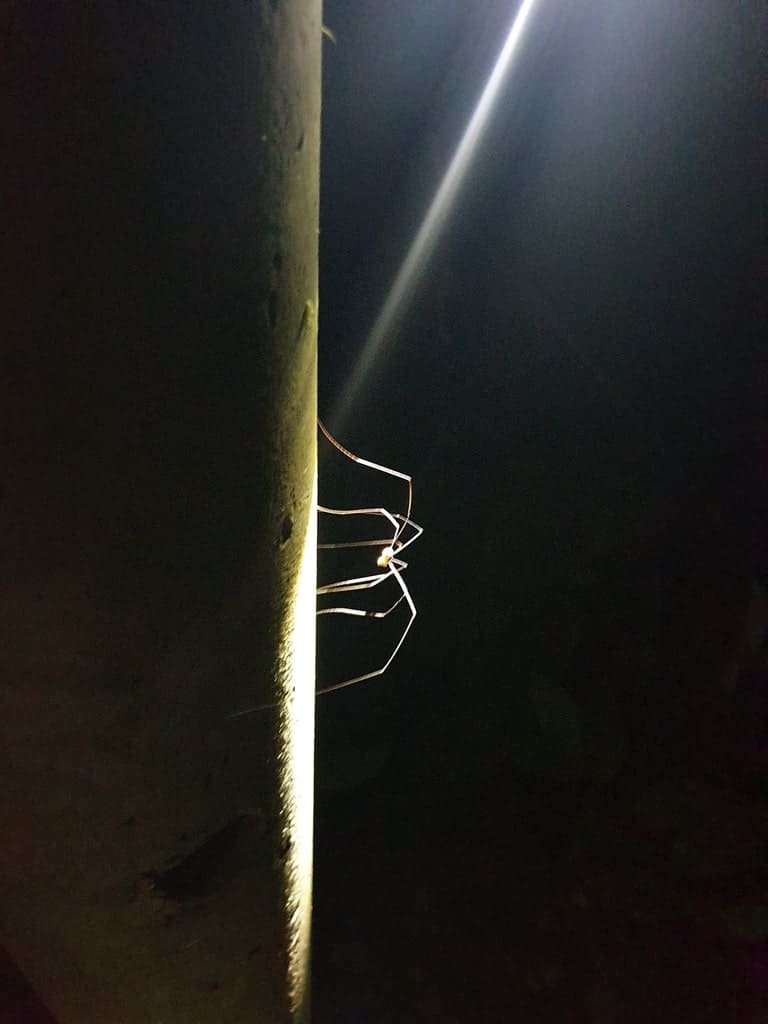
Night Tours
Many species around the area of Tortuguero can only be found during nighttime hours. These are nocturnal animals. The best way to observe these creatures is to book a Tortuguero Night Tour. With an experienced guide, hike down open trails and the Tortuguero wilderness to find sloths, snakes, frogs, raccoons, and more.
Check out: Things to do in Tortuguero.
Where to stay in Tortuguero
Pachira Lodge: A large eco-lodge, Pachira is set amid 34 acres of exotic flora and fauna. Just 5 minutes to the entrance of the national parka and a few minutes from town, this is an ideally situated lodge for the best of both worlds.
Mawamba Lodge: A touch of luxury in the jungles of Tortuguero, Mawamba uses locally sourced materials to keep traditions alive, and its carbon footprint low. On one side of the lodge, you are treated to the Caribbean Sea. On the other side, is the spectacular Tortuguero canal, where an array of wildlife can be spotted.
Day 11: San Jose
Leaving the tropical paradise that is Tortuguero, you will then make your way back to the city of San Jose, where you will depart back home.
Pura Vida and safe travels.
You might also be interested in:
Things to do in Costa Rica

